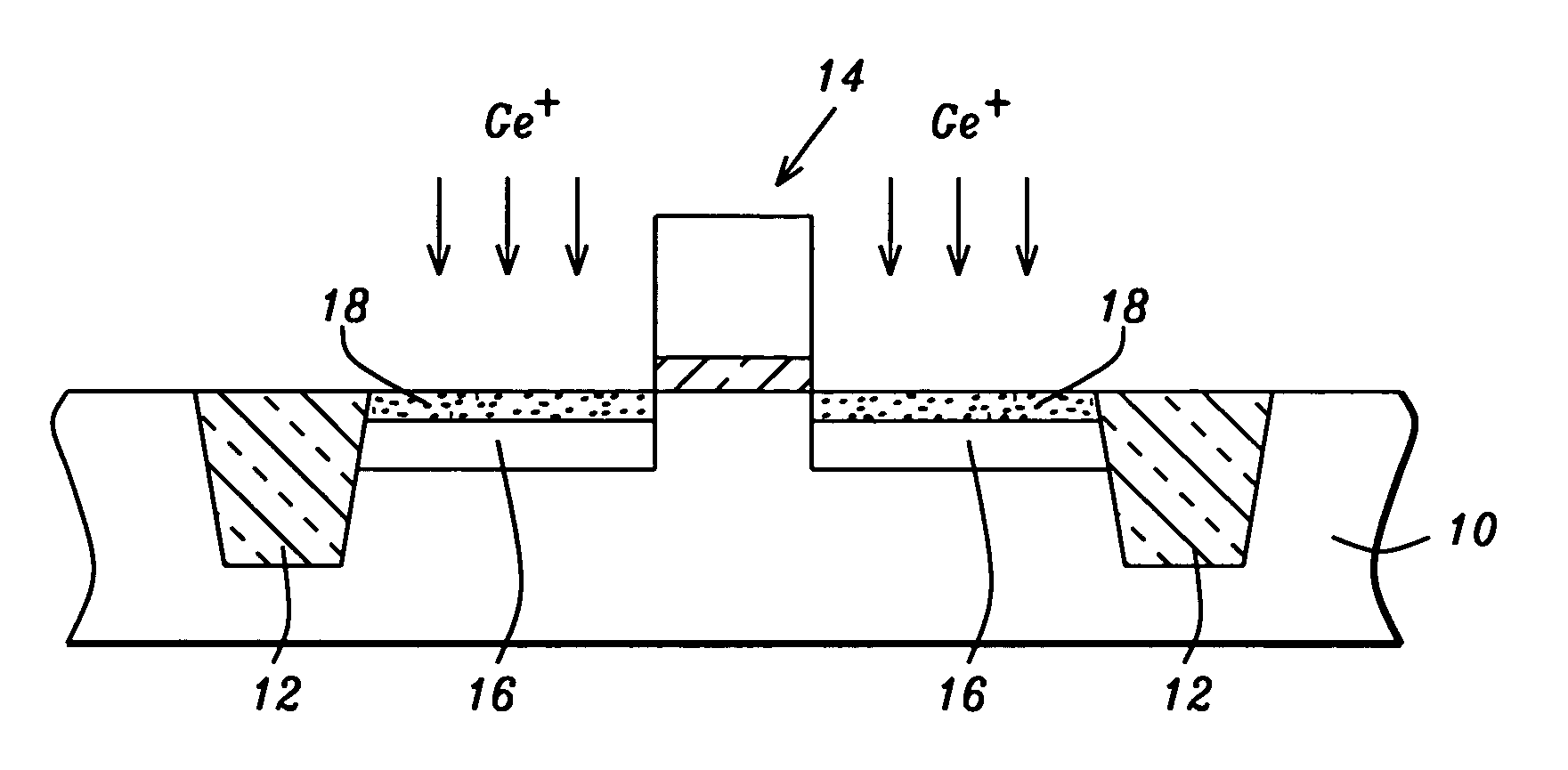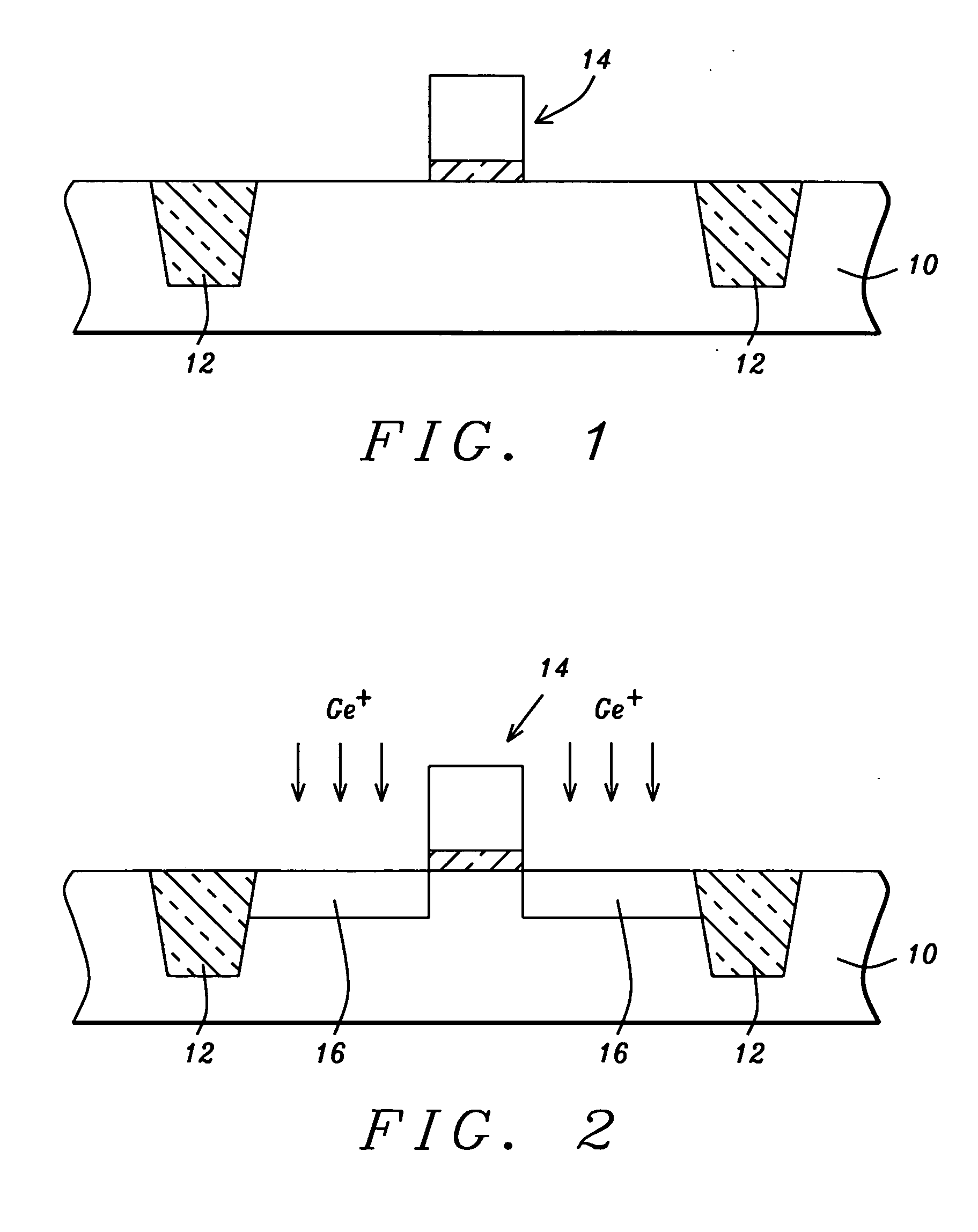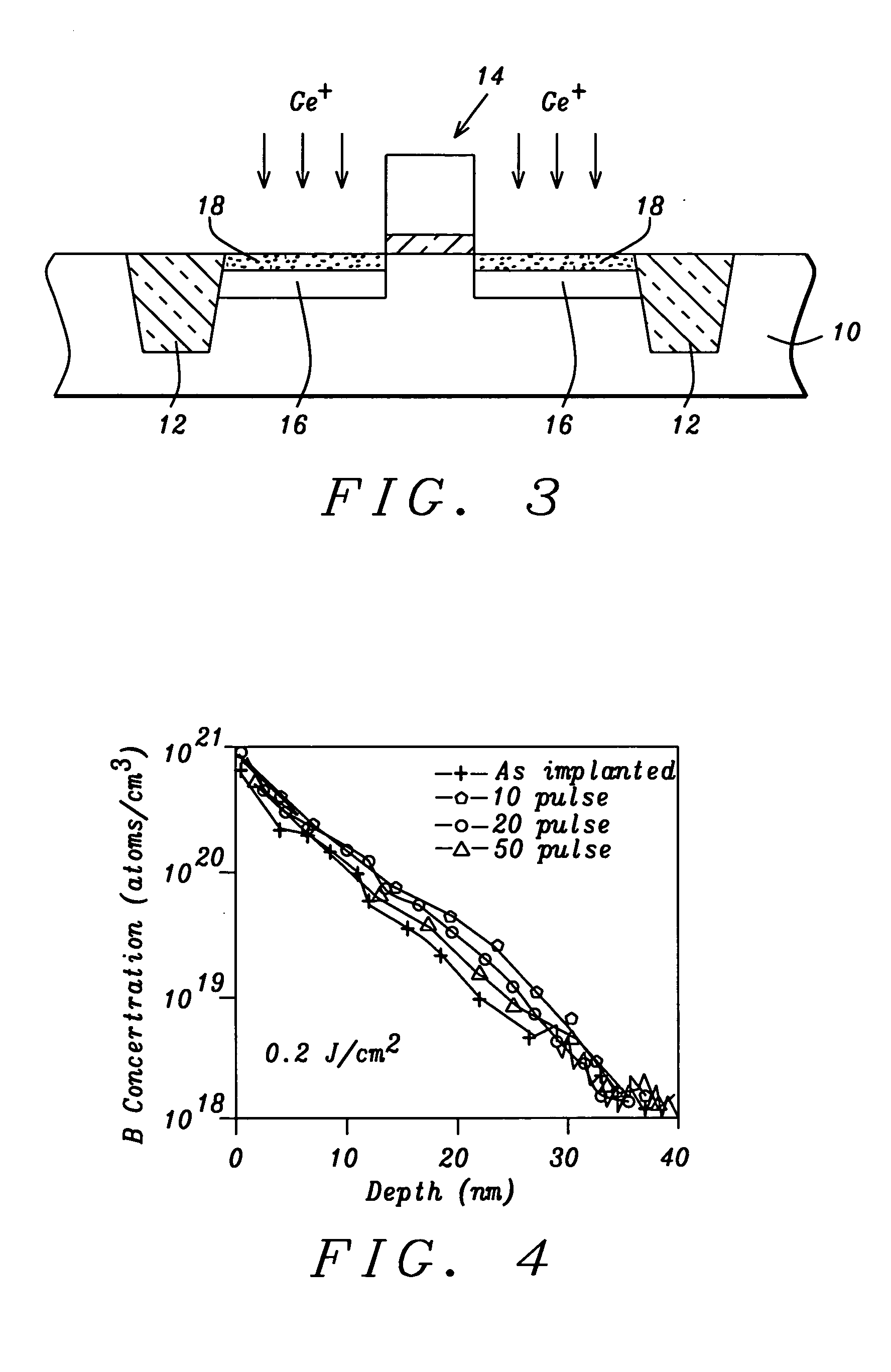Dual step source/drain extension junction anneal to reduce the junction depth: multiple-pulse low energy laser anneal coupled with rapid thermal anneal
a junction depth and annealing technology, applied in the field of forming mos transistors with reduced junction depth, can solve the problems of gate shape distortion, pulse laser annealing in combination with pai, difficult to obtain highly steep ultra-shallow junction profiles, etc., and achieve the effect of reducing the junction sheet resistan
- Summary
- Abstract
- Description
- Claims
- Application Information
AI Technical Summary
Benefits of technology
Problems solved by technology
Method used
Image
Examples
Embodiment Construction
[0022] Using the standard processes from prior art, a field effect transistor device is formed in a silicon semiconductor substrate 10, n type silicon in this embodiment, as shown in FIG. 1 up to and including the steps of forming shallow trench isolations (STI) 12 and the gate electrode structure 14.
[0023] A pre-amorphizing Ge+ ion implant known in prior art is performed to form a thin PAI layer 16 in silicon as shown in FIG. 2. The implant conditions are: ion energy of approximately 1 to 20 keV and dose of about 1E14 to 1E16 ion / cm2. The PAI layer thickness is approximately between about 2 and 40 nm. Heavy Ge+ ions cause adequate damage to the crystalline silicon lattice thereby rendering the top surface amorphous. Since the melting point of amorphous silicon layer is approximately 300 C less than that of crystalline silicon, selective annealing process is therefore enabled. It is to be noted the lattice damage during this step is later repaired during subsequent annealing steps...
PUM
 Login to View More
Login to View More Abstract
Description
Claims
Application Information
 Login to View More
Login to View More - R&D
- Intellectual Property
- Life Sciences
- Materials
- Tech Scout
- Unparalleled Data Quality
- Higher Quality Content
- 60% Fewer Hallucinations
Browse by: Latest US Patents, China's latest patents, Technical Efficacy Thesaurus, Application Domain, Technology Topic, Popular Technical Reports.
© 2025 PatSnap. All rights reserved.Legal|Privacy policy|Modern Slavery Act Transparency Statement|Sitemap|About US| Contact US: help@patsnap.com



